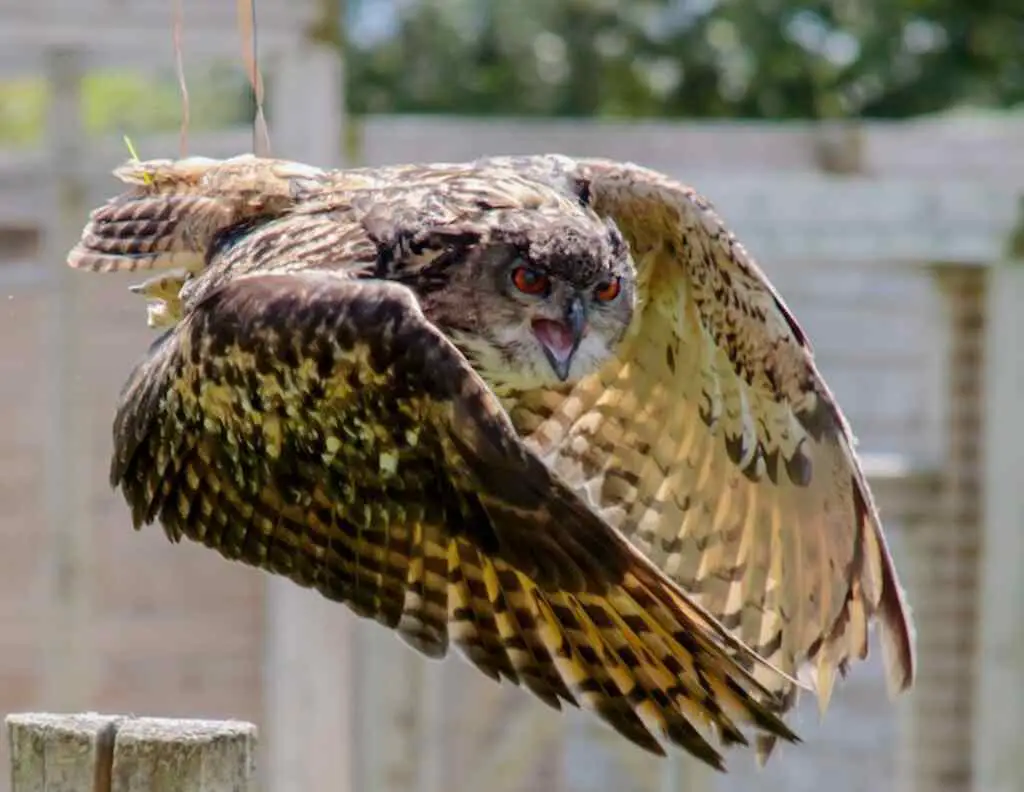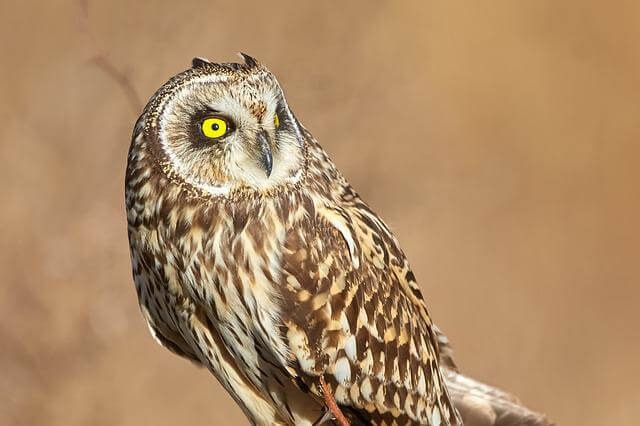For centuries, humans have been fascinated by the captivating creatures known as owls. With their striking appearances and mysterious behaviors, they have been the subject of many myths and legends throughout history.
Despite their popularity, however, there is still much that we don’t know about these birds of prey. One of the most intriguing aspects of owl behavior is their vocalizations.
While many people may be familiar with the iconic “hoot sound” associated with owls, these birds actually produce a variety of different sounds depending on their species and circumstances.
In this article, we will explore one particular type of owl vocalization – the screech – and investigate the question “Why do owls screech?”
Table of Contents
- 1 Definition of Owls
- 2 General Overview of Owl Sounds
- 3 Focus on the Screech Sound
- 4 Why Do Owls Screech?
- 5 The Science Behind the Screech
- 6 Cultural Significance of Owl Screeching
- 7 Summary of Key Points About Why Do Owls Screech
- 8 Importance Of Understanding Owl Communication For Conservation Efforts
- 9 Author
Definition of Owls
Before delving into owl vocalizations, it’s important to establish what exactly we mean when we refer to “owls.” Owls are a group of nocturnal birds in the order Strigiformes. They can be found on every continent except Antarctica and come in a wide variety of shapes, sizes, and colors.
One characteristic that all owls share is their exceptional hunting ability. These birds have specialized adaptations for hunting in low light conditions such as keen eyesight, silent flight feathers that muffle sound when flying, and sharp talons for capturing prey.
General Overview of Owl Sounds
As mentioned earlier, owls produce a range of sounds beyond just the classic hoots that most people are familiar with. Many species use calls to communicate with each other or signal alarm or aggression to potential threats. These sounds can vary from soft chirps to loud screeches depending on the context.
In general, owl sounds can be divided into two categories: songs and calls. Songs are longer vocalizations typically used by males during courtship rituals or territorial displays, while calls are shorter sounds used more frequently for communication between individuals.
| General Overview of Owl Sounds | |
|---|---|
| Types of Sounds | Songs and Calls |
| Usage of Songs | Courtship rituals, territorial displays |
| Usage of Calls | Communication between individuals |
| Sound Intensity | Varies from soft chirps to loud screeches |
| Significance | Communication or signaling alarm or aggression |
Focus on the Screech Sound
Out of all the sounds produced by owls, the screech is perhaps the most distinctive. This sound is characterized by a high-pitched, shrill noise that can be heard over long distances.
While not all owl species produce a screeching sound, it is commonly associated with birds such as barn owls, great horned owls, and eastern screech owls. In the next section of this article, we will explore some of the reasons why owls might produce these unique vocalizations and what they can tell us about these fascinating creatures.
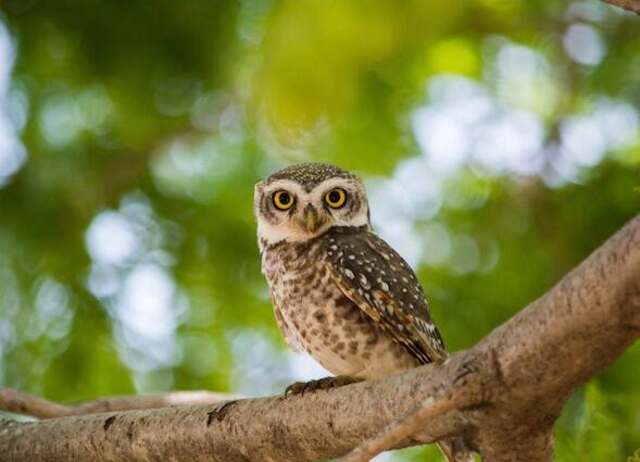
Why Do Owls Screech?
Owls are known for their unique vocalizations, including screeches, hoots, and whistles. But why do owls screech? There are several reasons why these birds of prey use their vocalizations to communicate.
Communication with Other Owls
One of the primary reasons why owls screech is to communicate with other members of their species. Owl calls can convey a wide range of information, including the owl’s location, gender, and breeding status.
For example, male owls may emit low-pitched hoots to establish territory and attract mates. Females may respond with higher-pitched calls signaling their interest or availability for breeding.
Territorial Behavior
Owls can be very territorial animals, often defending their territories from other animals that may pose a threat or compete for resources.
Screeching is one way that owls can assert their dominance and warn off potential intruders. This behavior is especially common during mating season, when competition for resources and mates is at its highest.
Attracting Mates
Another reason why owls screech is to attract mates. The sounds made by male owls during courtship rituals can be quite elaborate and complex, involving a range of vocalizations such as hoots, whistles, and trills. By showing off their impressive vocal abilities, male owls hope to win over potential mates.
Warning Signal to Predators
Another important reason why owls screech is as a warning signal to predators. Owning powerful talons and sharp beaks does not always ensure safety from danger, so many species have developed unique ways of alerting others within the area when there’s danger around us or some other predator being nearby.
When an owl perceives a threat, it may let out a loud screech to alert other owls and animals in the area, which can help them avoid danger or prepare for an attack.
Owls utilize their vocalizations for various purposes, such as communicating with other owls, protecting their territory, attracting mates, and signaling warnings to potential threats.
Understanding these vocalizations can give us greater insight into these magnificent birds of prey and provide important information for conservation efforts.
| Why Do Owls Screech? | |
|---|---|
| Reasons for Screeching | Communication with other owls, territorial behavior, attracting mates, warning signal to predators |
| Communication | Conveys owl’s location, gender, breeding status |
| Territorial Behavior | Asserting dominance, warning off potential intruders |
| Attracting Mates | Elaborate vocalizations during courtship rituals |
| Warning Signal | Alerting other owls and animals in the area to potential danger |
| Importance | Provides insight into owl behavior and conservation efforts |
Types of Owl Screeches
Barn Owl Screeches
Barn Owls are known for their eerie, high-pitched screeches that can be heard from a distance. Their screeches are often described as sounding like a hissing or rasping sound, similar to the sound of steam escaping from a radiator. Barn Owls use these sounds primarily to communicate with other owls in their territory or to attract mates.
Juvenile Barn Owls may also use screeching as a way to beg for food from their parents. Interestingly, the pitch and tone of Barn Owl screeches varies depending on the situation.
When communicating with other owls, they may use a lower-pitched screech that is more resonant and carries farther. When attracting mates, however, they may use a higher-pitched screech that is more attention-grabbing.
| Type of Screech | Purpose |
|---|---|
| High-pitched, hissing or rasping | Communication with other owls in their territory or attracting mates |
| Lower-pitched and more resonant | Communication with other owls |
| Higher-pitched and attention-grabbing | Attracting mates |
Great Horned Owl Screeches
The Great Horned Owl is known for its deep, resonant hooting calls that can be heard throughout the night. In addition to hooting calls, however, Great Horned Owls also produce a variety of screeching sounds that are used in different situations.
For example, when defending their territory from intruders or warning off potential predators, they may emit short bursts of high-pitched screams or shrieks.
In addition to these defensive calls, Great Horned Owls also use distinctive vocalizations during courtship and mating season. These vocalizations include soft hoots and trills interspersed with low growling sounds.
| Type of Screech | Purpose |
|---|---|
| Deep, resonant hooting calls | Heard throughout the night |
| Short bursts of high-pitched screams or shrieks | Defending their territory from intruders or warning off potential predators |
| Soft hoots and trills interspersed with low growling sounds | Courtship and mating season |
Eastern Screech Owl Screeches
The Eastern Screech Owl is named for its distinctive trill-like screeching call that can be heard throughout the night in wooded areas across much of North America. While Eastern Screech Owls primarily use their screeches for communication with other owls, they may also emit these sounds when hunting or defending their territory.
Interestingly, Eastern Screech Owls are also known for their ability to mimic other birds and animals. They may incorporate the vocalizations of other species into their screeches, creating a unique and complex vocal repertoire that is used for a variety of purposes.
This ability to mimic other species has been observed in several other owl species as well, suggesting that it may be an adaptive trait that helps them survive in different environments.
| Type of Screech | Purpose |
|---|---|
| Trill-like screeching call | Communication with other owls or hunting |
| Mimicking other birds and animals | Used for a variety of purposes, including defense and attracting mates |
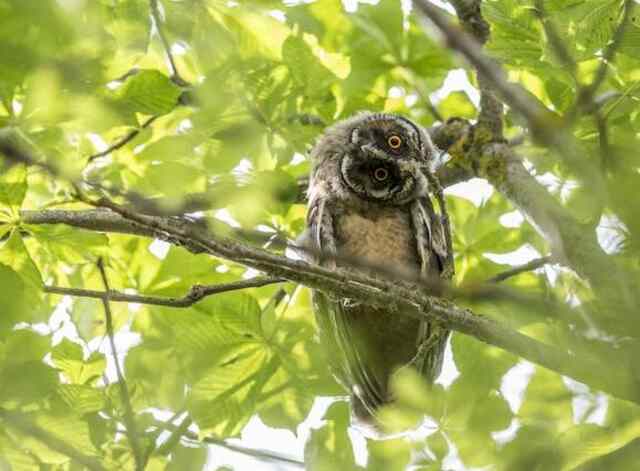
The Science Behind the Screech
Anatomy of an Owl’s Vocal Cords
Owls have a unique anatomy that allows them to produce their distinctive screeching sounds. Unlike humans and many other animals, owls do not have vocal cords.
Instead, they have a specialized structure called a syrinx, located at the base of their trachea. The syrinx is a bony structure surrounded by muscles and air sacs that work in tandem to create sound.
The precise construction of the syrinx varies between owl species, which accounts for differences in pitch and tone. Generally speaking, larger owl species such as the Great Horned Owl have larger syrinxes with more muscle mass, allowing them to produce deeper sounds than smaller species like the Eastern Screech Owl.
| Information | Description |
|---|---|
| Vocal Cords | Owls do not have vocal cords but a syrinx. |
| Syrinx | A bony structure surrounded by muscles and air sacs that allow owls to create sound. |
| Pitch Variations | Differences in the size and structure of the syrinx among owl species accounts for differences in pitch and tone. |
| Ultrasonic Screeches | Some owl species produce ultrasonic screeches that require specialized equipment to detect. |
Frequency and Pitch Variations in Owl Screeches
Owls are known for producing high-pitched screeches with complex tonal qualities. These sounds are produced by vibrations within the owl’s syrinx, which is capable of producing two distinct notes simultaneously. This is what gives owl screeches their characteristic “twisted” or “warbling” quality.
The frequency range of owl screeches can vary widely between species, and even between individuals within a species. Some owls produce screeches that fall within human hearing range (20 Hz – 20 kHz), while others produce ultrasonic frequencies outside this range that are only detectable by specialized equipment.
| Information | Description |
|---|---|
| Screech Characteristics | Owl screeches are high-pitched with complex tonal qualities. |
| Syrinx Vibrations | Screeches are produced by vibrations within the owl’s syrinx. |
| Frequency Range | The frequency range of owl screeches can vary widely between species and even between individuals within a species. |
How Owls Produce Their Unique Sounds
To produce their characteristic screeching sounds, owls must coordinate the movement of several different anatomical structures at once. First, air is drawn into the lungs and passed through small passageways to reach the syrinx at the base of the trachea.
Next, muscles surrounding the syrinx contract and relax in a coordinated pattern, causing the bony walls of the syrinx to vibrate. Air is expelled from the syrinx and passed through a resonating chamber in the owl’s throat, where it is shaped into the complex screeching sounds we hear.
The exact mechanism behind owl vocalization is still not fully understood by scientists, and there is ongoing research into how different species produce their unique sounds. However, it is clear that owls have evolved an incredibly complex system for communicating with each other through sound.
How Owls Produce Their Unique Sounds
| Information | Description |
|---|---|
| Anatomical Structures | Owls must coordinate the movement of several different anatomical structures to produce screeching sounds. |
| Air Passage | Air is drawn into the lungs and passed through small passageways to reach the syrinx. |
| Muscle Coordination | Muscles surrounding the syrinx contract and relax in a coordinated pattern, causing the bony walls of the syrinx to vibrate. |
| Resonating Chamber | Air is expelled from the syrinx and passed through a resonating chamber in the owl’s throat, where it is shaped into the complex screeching sounds we hear. |

Cultural Significance of Owl Screeching
Owl Symbolism in Different Cultures and Mythologies
Across the world, various cultures have interpreted owl screeches to signify different things. In several Native American tribes, owls are seen as sacred creatures and are associated with wisdom and knowledge.
Some tribes believe that the hooting of an owl is a sign of imminent death or misfortune. In ancient Greek mythology, owls were thought to be symbols of goddess Athena and were revered for their association with wisdom, protection, and prosperity.
In Hindu mythology, the goddess Lakshmi is often depicted with an owl sitting on her shoulder. In Japan, owls are considered to be symbols of good luck and prosperity.
The Japanese word for owl ‘fukurou’ means “no hardship,” which signifies that hearing an owl screech may be a sign of good fortune. On the other hand, in some cultures like those in Africa or Caribbean countries, owls are feared as symbols of darkness or death.
Read more: The Ultimate Guide to Bird Symbolism & Meanings in 2023
Owl Screeching in Literature and Media
Owl’s screeching is not only significant across different cultures but has also been included in literature and media. One famous example is J.K Rowling’s Harry Potter series, where Hedwig – Harry’s pet snowy owl – delivers letters by hooting loudly outside windows until someone opens them up to receive the letter.
The use of such a unique feature makes Harry Potter even more intriguing. Owls have also been featured prominently in commercials as well as movies such as Labyrinth (1986) where Sarah meets Hoggle who guides her through a maze while carrying an old-fashioned lantern that includes an owl carved into it.
Overall, while it may seem surprising that such nocturnal creatures can have different meanings across various societies globally–from evil spirits to wise protectors–it is essential to realize that these interpretations are a reflection of cultural beliefs and deeply rooted in their history.
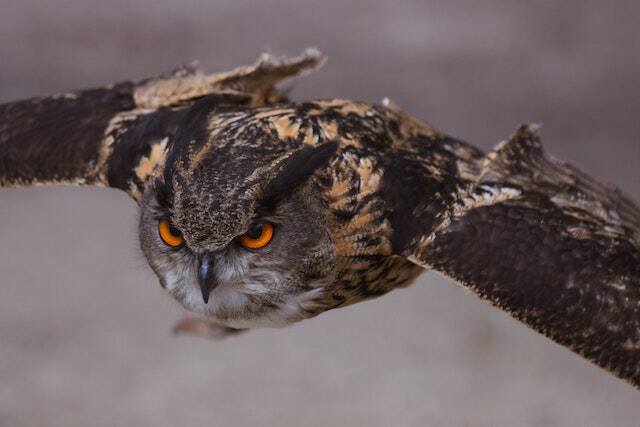
Summary of Key Points About Why Do Owls Screech
Throughout this article, we have explored the fascinating world of owl communication and learned about the various reasons behind their screeching. The primary function of owl screeches is to communicate with other owls, marking territories, attracting mates, and warning predators.
Owls also use different types of screeches for different purposes, such as barn owls’ serrated wing feathers that help muffle their flight noise while hunting. Understanding why owls screech and how they produce their sounds is crucial for conservation efforts.
As apex predators, owls play a critical role in maintaining the balance of ecosystems. By studying owl communication patterns and behavior, scientists can gain insights into the health of ecosystems and identify areas that require conservation efforts.
Furthermore, human activities such as habitat destruction and pollution can disrupt the natural habitats of owls and affect their ability to communicate effectively.
Owl populations have already been declining due to these factors; thus understanding owl communication is imperative for developing effective conservation strategies that target the root causes of habitat destruction.
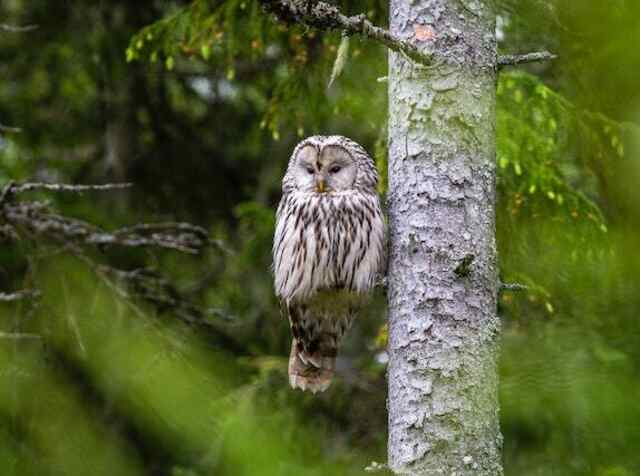
Importance Of Understanding Owl Communication For Conservation Efforts
The importance of understanding owl communication cannot be overstated when it comes to conserving these magnificent creatures. Due to various human activities such as deforestation or industrialization that threaten their habitats, some species have already become endangered or extinct.
By studying owl communication patterns and behavior, scientists can determine how human activities are affecting these creatures’ ability to communicate effectively.
For example, recent studies have shown that noise pollution caused by construction work affects nocturnal animals such as owls, who rely on sound cues for navigation and hunting.
Understanding how noise pollution affects owl communication could help identify measures like designing buildings with quieter machinery or minimizing construction during breeding seasons when particular species might need quiet surroundings.
Moreover, understanding owl communication could help develop more effective conservation strategies that focus on preserving specific habitats that are critical to owl survival.
Conservation groups could use this knowledge to advocate for habitat protection and to educate the public about these creatures’ importance.
By working together, we can ensure that these nocturnal predators continue to thrive for generations to come.

